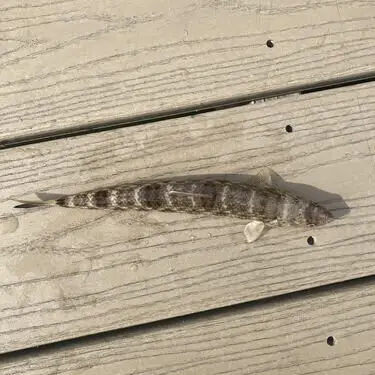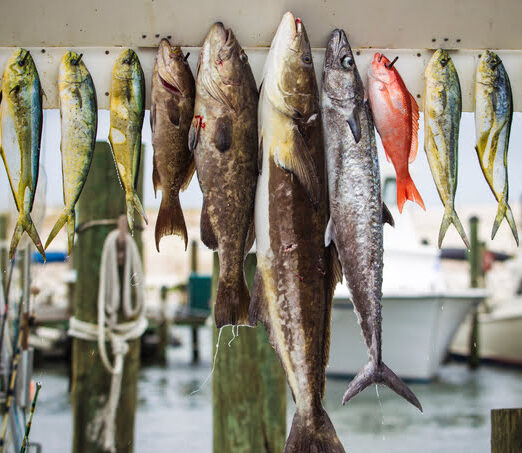Lizardfish are small predatory fish that can be found in many temperate and tropical waterways around the world. They have a reputation as “trash fish” because they are extremely common and often take the same bait as sportfish.
If you fish the coastal waters of the east coast for long enough, you are all but guaranteed to catch a lizardfish. With their abundance in mind, are Lizardfish good to eat?
They have a poor reputation as a food fish, but I fried one up for myself and had surprising results…
Table of Contents
- Are Lizardfish Safe to Eat?
- What do Lizardfish Taste Like?
- Drawbacks of Eating Lizardfish
- How to Clean Lizardfish
- Best Ways to Prepare Lizardfish
- Conclusion
Are Lizardfish Safe to Eat?
Yes, lizardfish are perfectly safe to eat. Although they have an intimidating name, they are not poisonous and contain no venomous spines.
They also do not accumulate toxins due to their small size and short lifespans and are generally free of harmful parasites.
Lizardfish also contain high levels of omega 3’s which provide a multitude of health benefits such as reduced inflammation and increased heart and brain health.
They also have high vitamin and mineral content due to their diverse diet.
And don’t worry if you aren’t interested in eating the Lizardfish you catch, some anglers actually use them as bait to target larger predatory fish.
What do Lizardfish Taste Like?
Lizardfish surprisingly taste amazing. Their meat has many attributes that people seek out in a food fish. They have firm, extremely white flesh with barely any oil or blood incorporated into it.

The flesh itself is extremely neutral tasting and mostly absorbed the flavors that I cooked it in.
Alone, the meat is slightly sweet and tangy and is most comparable to flounder, most likely because they occupy the same habitats and have similar diets.
Overall, lizardfish tastes great and is on par with some of the most sought-after food fish. It would be a great fish to serve to picky eaters or those who don’t like oily fish.
Drawbacks of Eating Lizardfish
We’ve already established that Lizardfish taste good, so why are so many people opposed to eating them? The answer most likely comes from the composition of the fish rather than the flavor.
Lizardfish are inherently pretty skinny and most of the ones that you catch are probably under 12 inches, meaning there is not much meat per fish and you would need many fish to make a good meal.
In addition to this, they have loads of tiny pin bones that are pretty much unavoidable when filleting the fish.
These bones, however, are very soft and will not harm you if swallowed. They are more of an inconvenience while eating the fish than anything else and are probably the reason lizardfish aren’t more highly favored
Related: How To Tell If a Fish Has Gone Bad (Smell, Touch, Taste).
How to Clean Lizardfish
There are many ways to clean a lizardfish, and different methods suit different cooking styles. I’ll go over the two most versatile in my opinion.
Butterfly: This is my preferred method and it keeps the fish whole which is great for getting the most meat from this little fish, although you do need to scale the fish beforehand.
To butterfly the lizardfish, make a shallow cut from its anus all the way to its head, avoiding puncturing its guts.
Once it is flayed open, scoop in the same direction you cut to pull all of the guts as well as the gills and neck out, leaving you with just the stuff you want to eat.
You can use any method to cook a butterflied lizardfish, but I think it works best for grilling or pan frying. Leaving the meat on the skin and bones keeps it intact while cooking.
Fillet: Lizardfish are super easy to fillet due to their cylindrical shape. You can choose to scale them and leave the skin on, or just cut the skin and scales right off.
To start your fillet, make a vertical cut across the body just behind the pectoral fin.
Then, slide your knife into this cut and push along the spine towards the tail to remove the meat from the body. Repeat this for both sides.
To remove the skin, separate a small section from the meat with your knife, then hold your knife steady and pull the skin towards you, which should separate the skin from the fillet as it is bisected by the blade.
The Virginia Institute of Marine Science has a great resource catalog with the biology, anatomy, and ecology of fish such as the Lizardfish. This resource could help you understand how to fillet a Lizardfish!

Do You Love Seafood?
Best Ways to Prepare Lizardfish

Lizardfish are extremely versatile fish when it comes to cooking. Their neutral meat can be paired with just about any seasoning and it is firm enough to be cooked in a variety of methods.
Some flavors that I would recommend to pair with Lizardfish are lemon, garlic, paprika, parsley, basil, tomato, dill, and thyme.
The best ways to cook it are pan searing, grilling, broiling, frying, and blackening. Pretty much any method will work, but I would avoid baking it with large vegetable pieces to avoid overcooking the fish while the vegetables cook.
Conclusion
So are lizardfish good to eat? The answer most likely depends on who you ask.
Most will agree that it tastes good, but different people will have different preferences when it comes to bones.
People who are used to eating freshwater panfish such as crappie, bluegill, and perch will probably have no problem with lizardfish, but when saltwater fishing, there are usually better options to choose from.
I think the humble lizardfish is great to eat when the bigger food fish just won’t bite and would make a great fish to supplement what you already have in a fish fry, but I probably won’t go out to target them anytime soon.
You May Also Like: Are Barracuda Good To Eat? Why The Poor Reputation?

Growing up in Florida, I’ve been surrounded by saltwater my entire life…and I love sharing my passion with others.
To learn more about why I started Saltwater Mecca, visit the ABOUT page.
Thank you for reading this article. Browse around & have some fun!